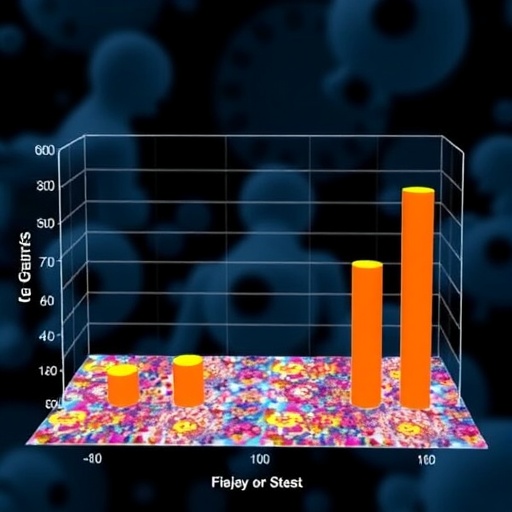In preparation for more tools that detect and measure the biology associated with Alzheimer's and other dementias earlier and with more accuracy, an Alzheimer's Association-led Workgroup has published appropriate use criteria (AUC) for lumbar puncture (spinal tap) and spinal fluid analysis in the diagnosis of Alzheimer's disease.
The AUC is available online by Alzheimer's & Dementia: The Journal of the Alzheimer's Association as an article in press, corrected proof.
"Early and accurate diagnosis of Alzheimer's disease is critical as therapies that have the potential to stop or slow the progression of the disease become available," said Maria C. Carrillo, Ph.D., Chief Science Officer at the Alzheimer's Association. "These criteria will arm medical professionals with necessary guidance when the use of lumbar puncture is an appropriate part of the process to diagnose Alzheimer's disease and other dementias, thereby giving people with dementia and their families the possibility of a head start in preparing for the course of their disease."
Alzheimer's disease is commonly diagnosed by a thorough examination of physical health, medical history and assessment of memory, thinking and reasoning. Lumbar puncture, while not currently in routine clinical practice in the U.S., is anticipated to be a safe and cost-effective way to retrieve cerebrospinal fluid (CSF) to test for biological markers of Alzheimer's disease, potentially delivering valuable diagnostic information to clinicians and their patients earlier in the course of the disease.
The Workgroup's efforts complement the 2013 AUC for brain amyloid PET scans developed by the Society of Nuclear Medicine and Molecular Imaging (SNMMI) and the Alzheimer's Association.
The lumbar puncture AUC criteria recommend clinicians consider the following patient populations as appropriate and inappropriate:
Appropriate uses of lumbar puncture:
- A patient has subjective cognitive decline (SCD) and is considered to be at an increased risk for Alzheimer's disease based on indicators that include a persistent decline in memory, younger onset age (>60), onset in the last 5 years and others. The decision to perform CSF biomarker testing in this case should be individualized and most strongly supported when the individual, family and clinician all are concerned about the patient's cognitive decline.
- A patient has mild cognitive impairment (MCI) that is persistent, progressive and unexplained. MCI includes mild deficits on cognitive testing but no change in functional abilities.
- A patient has symptoms that suggest possible Alzheimer's disease, meaning the dementia could be due to another cause.
- A patient has MCI or dementia with onset at an early age (A patient meets core clinical criteria for probable Alzheimer's disease with typical age of onset.
- A patient's dominant symptom is an unexplained change in behavior, such as delusions and delirium, and an Alzheimer's disease diagnosis is being considered.
Inappropriate uses of lumbar puncture:
- A patient is cognitively unimpaired, is within the normal range of functioning for their age and lacks significant risk factors for Alzheimer's disease.
- A patient is cognitively unimpaired but is considered to be at risk for Alzheimer's disease based on their family history.
- A patient has SCD and has been evaluated and found by a clinician not to be at high risk for Alzheimer's disease based on indications such as no family history or limited concern from an informant like a partner or family member.
- A patient has symptoms of rapid eye movement (REM) sleep behavior disorder, which is a strong predictor of disorders such as Parkinson's disease and Lewy body dementia.
- A patient already has been diagnosed with Alzheimer's and the test's use would be to determine the stage of their disease or its severity.
- A patient is an apolipoprotein E-e4 (ApoE-e4) carrier who has no cognitive impairment. ApoE-e4 is a genetic mutation strongly associated with risk for late-onset Alzheimer's.
- The test is being used in lieu of genotyping for individuals who are suspected to carry a rare genetic mutation that causes an early-onset form of Alzheimer's disease.
The AUC includes suggestions from the workgroup on implementing the criteria in clinical practice. They recommend that CSF biomarker testing be done by dementia experts who can determine the appropriateness of the test, educate the patient and family about the benefits and risks, ensure the procedure follows established guidelines, and integrate the results into the patient's treatment plan.
###
About the Alzheimer's Association®
The Alzheimer's Association is the leading voluntary health organization in Alzheimer's care, support and research. It is the largest nonprofit funder of Alzheimer's research. The Association's mission is to eliminate Alzheimer's disease through the advancement of research; to provide and enhance care and support for all affected; and to reduce the risk of dementia through the promotion of brain health. Its vision is a world without Alzheimer's. Visit alz.org or call 800-272-3900.
About Alzheimer's & Dementia: The Journal of the Alzheimer's Association®
The mission of Alzheimer's & Dementia: The Journal of the Alzheimer's Association is to bridge the knowledge gaps across a wide range of bench-to-bedside investigations. The journal creates a forum for rapid communication of new findings, ideas and perspectives; increases knowledge in diverse disciplines to promote early detection/diagnosis and/or interventions; and provides the scientific impetus for new initiatives or public policies concerning research on prevention and new models of health services. Visit http://www.alzheimersanddementia.com for more information about the Alzheimer's & Dementia journal family.
Editor's Note: "Appropriate Use Criteria for Lumbar Puncture and Cerebrospinal Fluid Testing in the Diagnosis of Alzheimer's Disease," by Leslie M. Shaw, Ph.D, et al, is available online Oct. 10, 2018, as an article in press corrected proof at http://www.alzheimersanddementia.com.
Media Contact
MJ Contino
[email protected]
872-225-3974
@alzassociation
http://www.alz.org




